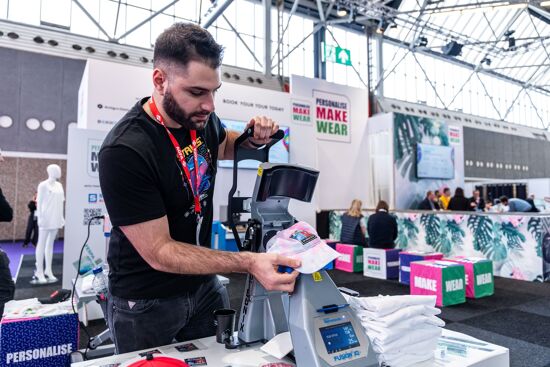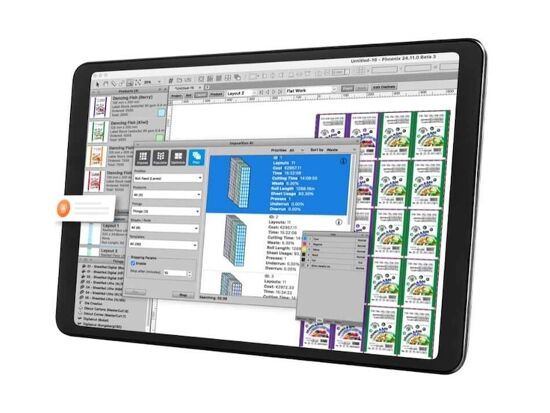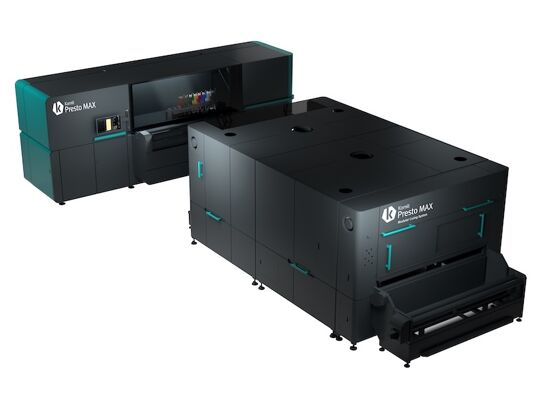Scaling up Sustainability for Printing on Technical Textiles
.png?width=750)
There are 2 universal truths in the printing of technical textiles. First, the best performance print base fabrics are synthetic. Second, the EU want to phase out fossil fuel derived fabrics. Both of these facts create opportunities and issues to be solved for printers.
Polyester has been a core staple of PFP fabrics for decades; being cheap, easy to print and holds colour well. While the low hanging fruit for any business has been to switch to recycled polyesters, which reduces emissions by around 35%, it still makes up less than half of global polyester fabric production. While there is little difference in terms of the outcome of sublimation printing between virgin and recycled polyesters, it has been recorded that recycled polyesters shed more microfibres due to their shorter fibre lengths and rougher texture.
Yet, because polyester still makes up more than 60% of global fibre production, and polyester elastane are the core fabric composition of sportswear; most investment to date has been in recycling polyester blends. Which is where sublimation and digital printing come in to their own in being able to offer the more sustainable solution. Carbios, the chemical recycler of polymers, stated in 2022 that in order for a polyester fabric to be financially viable for recycling it can’t contain more than 15% of its weight in other fibres or dyes. In sportswear we need to have as much elastane in a fabric as we can get, so reducing the weight of dyes used contributes to both the final performance of a fabric, and the circularity.
The major concern in moving to a circular economy with printing on synthetics will be the inks that are used and how that effects the recyclability. This is something that is going to be important to consider if you’re using a PET polyester that will travel between fabrics and packaging rather than keeping it in a closed loop fibre to fibre system. Especially as rPET only has real value as a clear polymer. While the EU has so far refused to give packaging companies like Nestle and Pepsi first refusal on rPET, as the pressure grows to increase the percentages of their recycled content, there may need to be more sharing of resins between the industries to achieve circularity targets.
In order to achieve the rapid and wide scale phase out of fossil fuels needed to limit climate catastrophe, we need to have scalable alternatives. The EU is keen to push for biobased synthetics as part of their plan towards circularity. Biobased plastics make up less than 1% of the plastics currently produced. And they come with their own print challenges. Many biobased resins have a lower dyeing temperature than polyester. Which is great if you’re solid dyeing, not so great if you’re printing. While the more sustainable ink options for digitally printing fabrics like polyester are dry toners, they still require heat to transfer the dyestuffs. Instead, they are similar to polyamides in so far as they respond better to inkjet printing. But with some challenges when it comes to matching to colour standards on biobased synthetics. Biobased synthetics have some more desirable properties over oil derived ones, which largely depends on the feedstock. But all are more expensive than either recycled or virgin conventional synthetics.
Scaling these alternatives for print requires patience, financial outlays for testing and a long term view of material strategies. Not something that is currently aligned with the race to the bottom prices and faster lead times we’re seeing from the industry to date. However, material changes are coming and those who can put a stake in the ground on new materials now will benefit over the next 5 years.
Sportswear Pro will be launching at The RAI Amsterdam, taking place on 19 - 22 March 2024. Sportswear Pro will showcase the very latest technologies and solutions for on-demand and customised sportswear production. From sample design and automated digital workflows, to innovative materials and integrated wearable technologies, the exhibition and visionary trend forum will present sustainable, faster and leaner production solutions to sports and activewear brands and manufacturers. Register here and use promo code SWPJ409and save 55 euros.
Topics
Interested in joining our community?
Enquire today about joining your local FESPA Association or FESPA Direct
Recent news

Special Effects in DTF Will Make Your “Prints” More Memorable
The DTF market is expanding with new vendors and innovations like multi-head printers enabling diverse ink options (spot, neon). Decorative films offer streamlined special effects. Keypoint Intelligence tested metallic and glitter films, noting varied ease of use and wash durability. New technology using adhesive and foil directly promises further creative advancements in DTF.

SmartHub – Expectations, opportunities and why you should attend!
The SmartHub at Personalisation Experience 2025 in Berlin will showcase personalisation and smart production opportunities across industries like textiles. Featuring a Smart Factory Trail with brands like Inkcups and Trotec, and a conference with experts discussing AI, mass customisation, and profit strategies, it offers insights into reducing waste and boosting efficiency through digital methods. Panel sessions will explore growth, automation in textiles, and smart manufacturing.

How is AI revolutionising Large Format Print?
Nessan Clearly discusses how AI in print relies on data pattern matching, already enhancing software for large format providers. He predicts that this will result in increased AI integration in workflow planning, job queue management, colour correction, image upscaling, and predictive maintenance via sensors and vision systems, ultimately streamlining operations and offering greater flexibility.

One Ink for All? Exploring Pigment in Textile Printing
Digital textile printing faces complexity due to diverse substrates requiring specific inks. The industry seeks a universal ink, with pigment ink showing potential. While traditionally for natural fibres, advancements aim to broaden its application, simplify processes by reducing pre/post-treatment, and improve sustainability, though challenges like hand feel on garments remain.